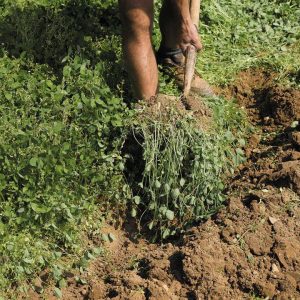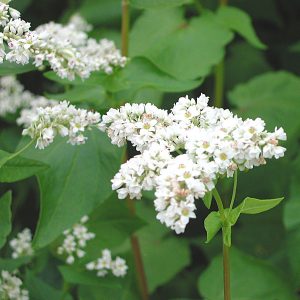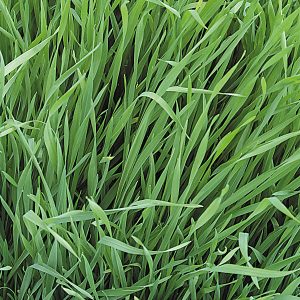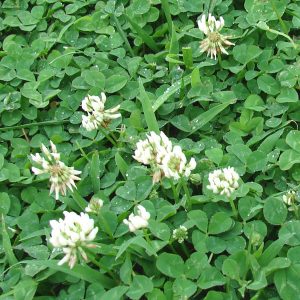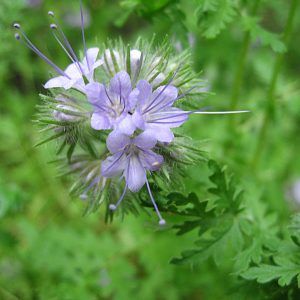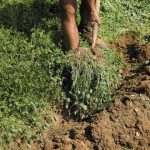Green manures can be confusing. Which green manure to grow and when, what to do when it’s grown? This guide solves the mystery to green manuring.
This guide is designed to help those that have never sown green manure before, covering 5 topics:
- Crop – Which Green Manure Crop to Grow
- Soil Preparation & Matching to the Green Manure
- Time of Year to Grow Green Manure
- How to Sow Green Manures
- Digging in the Green Manure
By the end of the 5 topics, you will be clear on what to do and how to do it. So that you can have beautiful soil, naturally! We shall start the series with the Crop, choosing which green manure to grow.
Which Green Manure Crop to Grow
The first question to ask is, ‘do you need to fit into a crop rotation plan?’ If you want to avoid a build-up of soil pests & diseases it’s important to follow a crop rotation plan. Most simple crop rotation plans such as the 3 course rotation work on Roots (Potatoes, Carrots) > Legumes (Peas, Beans) > Brassica (Cabbage, Kale). You need to take this into account when choosing your green manure.
For example, Winter Tares is part of the pea/bean (legume) family, therefore you wouldn’t sow before peas & beans. But it can replace legumes in a crop rotation plan and will add nitrogen to the soil which will be beneficial to the next crop of leafy brassicas
There are green manures that don’t need to follow a crop rotation plan such as Buckwheat, Forage Rye and Phacelia. These types of green manure would be used primarily to add organic matter to the soil, whilst also offering the benefit of weed suppression.
Soil Preparation & Matching to the Green Manure
The start point, regardless of soil type, is that the soil is going to have to be dug over and free from weeds You then need to know what type of soil you have. Certain green manures are used in specific soils only and if you want to get the maximum nitrogen/soil benefit then you need to match the green manure with the right soil.
For example, Lupins would be used in acid soils, whereas Alfalfa is not suitable for acid soil but loves dry soil Forage Rye with its fibrous root system is particularly good for improving heavy clay soils.
It’s not always necessary to sow based on specific soil, some green manures such as Italian Rye will suit most soils and will act purely as a soil improver by increasing the organic matter, forming vital humus. The good news is that whatever type of soil you have, there is a green manure solution.
Time of Year to Grow Green Manure
Green manure is thought of as mainly an autumn/winter crop due to its ability to assist in reducing the impact of soil erosion from the winter rains and allowing the roots to grow deeper into the soil to assist with aeration and breaking up heavy soils such as clay. However, they also offer similar benefits in summer months, with the leafy foliage acting as a defence against the drying effects of sun and wind. They truly are an all-year-round beneficial plant
Green Manure in the Crop Rotation
Green manure crops can be part of a garden crop rotation, growing in a planting bed or allotment for a full season. A good home garden/allotment green manure strategy is to use green manure crops as catch crops. A catch crop is a filler crop; it grows in a vacant spot before or after a main crop. A catch crop can be interplanted with your main crops.
The time of year needs to be taken in to account depending on your needs, for example, you may want a quick annual cover crop such as Fenugreek, which takes less than 10 weeks from sowing to digging in. Alternatively, just cut it down and leave on the soil as mulch or use in your composting.
Spring Green Manures
Sow spring green manures as soon as the soil can be worked in early spring. Spring green manures can grow for 6 to 10 weeks before main crops are planted.
Over Wintering Green Manures
Or you may wish to sow a long-term crop like White Clover for over-wintering. Over-wintering green manures can be sown as soon as the summer harvest comes out of the ground. When possible sow the winter green manure at least 6 weeks ahead of the first killing frost.
Typically, green manure is sown in autumn so that they will help to prevent the nutrients in the soil being washed away with the winter rains and have sufficient time for the root system to develop to help open-up heavy soils or bind light soils.
They maybe legumes such as Winter Tares (vetch) or non-legumes such as Forage Rye both of which are hardy green manures that will grow throughout winter before being dug into the soil in spring.
Green Manures for Clay Soils
If sowing in clay soil, another option is to incorporate the green manure ahead of winter. Then the winter frosts can help to break the soil down.
Interplanting, Catch Crop
Green Manures can also be used as an interplanting-crop, or catch crop. Main season green manure crops serve as a living mulch to keep down weeds and slow soil moisture erosion.
Under-planting Green Manures
Sow main season green manures as an under crop. Wait for 3 to 4 weeks after sowing or planting out your main crop then sow the green manure as an underplanting.
Yellow Trefoil, for example, is a low grower that can be sown in between taller crops that have open canopies like tomatoes, potatoes, sweetcorn & especially long-standing brassicas which overwinter. Dig in after harvests, or leave to over-winter to help suppress weeds.
Full season green manure can be planted as part of crop rotation for a full season. A full-season green manure crop will knock down most perennial weeds and will reduce pest root populations. Full-season green manures can also feed the soil. Put full-season green manures in your four-year crop rotation plan.
How to Sow Green Manures
Sowing green manure is easy. Here are the steps:
- Prepare the soil by digging it over and removing any weeds, break up any clumps, rake the seedbed evenly to a fine tilth and then lightly tread the soil
- For small green manure seeds broadcast sow the green manure (e.g. scatter evenly) this ensures you get good coverage for weed suppression. Larger green manure seeds such as Field Beans and Forage Peas can be sown in furrows 10cm apart in rows 20cm apart to a depth of 5cm
- Rake over the seedbed and water well
- Keep the seedbed just moist until the cover crop germinates and becomes established.
If the weather is very hot, keep the seedbed from drying out by sprinkling straw over the seedbed. If birds start digging up the seed, lay a horticultural fleece over the planting bed.

Watch Monty Don broadcast sowing Red Clover in between two crop harvests in this clip from the BBC
Digging in the Green Manure
The 3 steps of digging in:
- Green manure should be cut down before flowering when the stems are soft and ‘green’
- Dig the green manure into the top 15cm of soil. Alternatively, the green manure can be left on top of the soil as a mulch and let the worms drag down the organic matter
- Wait 30 days before sowing the next crop
Chop up top growth (foliage) into smaller pieces. Use the edge of a spade but you can also use shears especially if the foliage is too coarse or long. Turnover and dig in foliage and green manure roots with a spade into the soil to a depth of 15cm. Do small areas at a time. Gently tamp down the soil with the back of a rake and then rake the soil to a fine tilth.
Foliage can be removed and composted if it is too coarse or too hard to dig in or if you just prefer to. Then either dig in roots by turning over in a small section or, if you wish, leave place and plant seedlings through the roots. This last method is only suitable for annual types that die off once very closely topped, perennial green manures like clovers will continue to grow.
Leave 4 weeks before sowing seed especially with green manures like Forage Rye and Winter Tares. They produce a chemical that once released inhibits the germination of small seeds. Great against weed seed germination but not so good for veg seeds.
However small plants/seedlings are not affected and can be transplanted within a couple of weeks.
When to Dig in Green Manures
It is best to dig in or top green manures before they start flowering and especially before they go to seed. The stems become woody and they are harder to break down in the soil.
However you may wish to allow a few to flower especially the Clovers or Phacelia as their flowers are havens for bees & beneficial insects. They will just need careful management to ensure they do not go to seed unless you wish them to.
Green Manure for ‘No-Dig’ Growers
For those who follow a ‘No dig’ approach, use the same method in cutting down the green manure but instead of digging in just leave the cuttings on the surface as a mulch. Or hoe the cuttings in. Otherwise, the cuttings can be removed and simply composted.
Benefits of Green Manure
Your soil will reap many benefits from incorporating green manure into your crop rotation plans.
Organic matter – lots of leafy green manure vegetation helps to increase the organic matter in the soil.
Nitrogen – green manure can either add nitrogen to the soil or it can lift the nitrogen closer to the surface, thereby super boosting crop growth organically
Leaching – using green manure over winter prevents the rain from washing the soil’s nutrients away
Pests – green manure provides cover for frogs, beetles and other natural predators that feed on pests such as snails and slugs. Deter some of the crop pests such using a low growing green manure to deter carrot fly. Use mustard to help combat wireworm in a potato crop
Weeding – anything that reduces the need to weed has to be a good thing. Well, green manure does just that. Does away with the need for artificial weed barriers, harmful chemicals, and dodgy horse manure!

